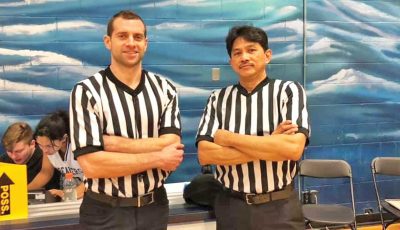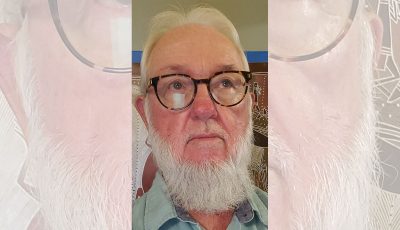The third galaxy
Never let a trend go to waste, even if you’re sick of it. With that in mind, as the post-solar-eclipse hoopla finally dies off, I’m going to milk the gig for an excuse to mention something else astronomical. It’s an object that’s part of our local cosmic family, but it’s pretty much the black sheep of the clan and never seems to get much attention outside of astronomy circles. This is the Triangulum galaxy, also known as M33.
M33, the Milky Way (our galaxy) and M31 (the Andromeda galaxy) form a trio of galaxies that are the mainstay of the “local group.” There are about 50 other galaxies in the group; most of them are dwarf galaxies and there are also some odd little numbers that remain obscure to me.
The Milky Way, Andromeda, and M33 are all spiral galaxies. Spiral galaxies are shaped like pinwheels and have swirling arms of stars radiating from the centers.
Andromeda is the closest spiral galaxy to the Milky Way, roughly 2.5 million light-years away, and M33 is the second-closest spiral galaxy at about 3 million light-years away.
Andromeda is famous eye candy for observers, and has probably been photographed almost as much as Kim Kardashian. It’s a dramatic sight even through a pair of medium-powered binoculars. If you were to go through life seeing just one object through binoculars, I’d nominate Andromeda as the best choice.
M33, by contrast, is a far tamer sight, at least through anything I’ve aimed at it, and it looks to me like a fuzzy cosmic cloud. Its orientation to us puts it “face on,” sort of like looking at the flat part of a dinner plate. You’d think that this large surface area would make it easy to see, but, paradoxically, face-on spirals are hard to see because their luminosity is spread over that large area. Spirals that are edge-on, by contrast, might have relatively low luminosity, but if that light is coming from a more concentrated cross section it makes the galaxy easier to see.
The upshot of this is that textbook figures about galaxies don’t really convey how easy, or hard, they are to see.
Anyway, one weird quirk of M33 is that it seems easier to find in binoculars than in a telescope.
At the beginning of this week I spent eclipse day in the mountains just a few miles south of Canada. This was not along the “path of totality,” but I wasn’t energetic enough to stir myself for that event anyway. At the moment of the eclipse I was having coffee in McDonald’s.
The treat, for me, was a night sky that happened to be clear and dark. Andromeda was easily visible with the naked eye. Through binoculars it was, as expected, a great sight. Seeing a bright, glowing ball of 1 trillion stars is nothing to sneeze at.
M33 was the second-easiest galaxy to see, but not nearly as prominent as Andromeda.
I’ve read claims that M33 is naked-eye visible, but nobody in my circles claims to have seen it with a bare eyeball. Until this changes, we consider Andromeda the most distant thing you’re likely to see with the bare eye. And even that requires clear skies and a little bit of knowledge of where to look, so it’s not a slam-dunk that will bonk you on the head without a little effort.
At this point we have to get a little bit picky about what “visible” means. Astronomy can stretch the term.
Some things are, of course, clearly visible if you’re looking right at them.
Other things, though, are so faint we can only see them with “averted vision,” that is, when we’re looking a few degrees away from them and they’re consequently offset from the center of our focus. This is because of how our eyes work. Nature has seen fit to endow us with really sharp color vision for things directly in focus, while allowing us greater sensitivity, but less color perception, for objects away from that center. After all, when a tiger is lurking in our periphery, it’s more important to detect it than to indulge an appreciation of its exact colors.
Anyway, if you ever do get a clear sky and a fix on Andromeda, it might be directly visible or it might require averted vision.
Modern life’s technology, of course, jams a lot of bright light into eyeballs that are staring at electronic screens. The technique of averted vision isn’t something that comes naturally in these settings. The notion that seeing is a skill seems pretty weird but it is, indeed, very much a skill.
Andromeda and M33 are in viewable positions from Saipan this time of year and would make tempting binocular targets. Alas, I do have to admit that technology trumps typing in this realm. The Web, or various cell phone apps, can orient you far more effectively than I can. Suffice it to say that finding the Great Square of Pegasus is the best way to get in the neighborhood.
M33 is part of our local cosmic family, so even if it’s not as famous as Andromeda it still deserves some attention. After all, now that the eclipse is over everybody will just resume talking about politics again. Me, I’ll take the stars over that stuff any time.



























